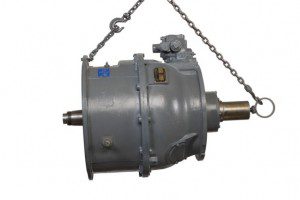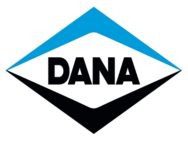How to Tell If Your Torque Converter Is Bad: Essential Signs and Symptoms
Your vehicle’s torque converter plays a crucial role in transferring power from the engine to the transmission in automatic vehicles. When it begins to fail, various warning signs can alert you to potential problems before they escalate into costly repairs. Let’s explore how to identify torque converter issues, understand their impact, and know when to seek professional assistance.
Understanding Your Torque Converter
Before diving into symptoms, it’s important to understand what the torque converter actually does. Think of it as the mediator between your engine and transmission. Unlike manual transmissions that use a clutch, automatic transmissions rely on hydraulic fluid and the torque converter to transmit power. The torque converter consists of an impeller (connected to the engine), a turbine (connected to the transmission), and a stator that multiplies torque when needed.
Common Signs of Torque Converter Problems
1. Unusual Shuddering or Vibrations
One of the most noticeable signs of torque converter issues is a shuddering sensation that typically occurs between 30-45 mph. This feels similar to driving over rough road, except it happens even on smooth pavement. This shuddering occurs because the torque converter’s lock-up clutch is slipping, causing inconsistent power transfer between the engine and transmission.
The sensation might come and go, making diagnosis challenging. Pay attention to whether these vibrations occur consistently at specific speeds or during particular driving conditions.
2. Transmission Slippage
When your torque converter begins failing, you might notice your transmission slipping – where your engine revs higher than normal without a corresponding increase in speed. This happens because the torque converter isn’t efficiently transferring power to the transmission.
You might observe your tachometer needle climbing while your speedometer barely moves. This inefficiency not only affects performance but also reduces fuel economy substantially.
3. Overheating Transmission
A malfunctioning torque converter can cause your transmission to overheat. The fluid inside the torque converter generates heat during normal operation, but a failing converter can produce excessive heat that breaks down transmission fluid and damages internal components.
If your temperature gauge shows higher-than-normal readings or you notice a burning smell coming from under the hood, your torque converter might be the culprit. Prolonged overheating can lead to catastrophic transmission failure if not addressed promptly.
4. Unusual Noises
Listen carefully for unusual sounds that might indicate torque converter problems:
- A “whirring” noise when the engine is running but the car is stationary
- Clicking or clunking sounds during gear shifts
- A continuous “humming” noise that changes pitch with vehicle speed
These sounds often originate from worn needle bearings, damaged fins, or contaminated transmission fluid within the torque converter.
5. Delayed or Rough Gear Engagement
When you shift from park to drive, a healthy vehicle should engage gear smoothly with minimal delay. A failing torque converter might cause a noticeable lag between shifting the selector and the transmission engaging. This delay creates that characteristic “clunk” when the transmission finally engages after several seconds.
This happens because the torque converter isn’t building proper pressure or transferring power efficiently, requiring more time to generate enough force to engage the transmission.
6. Illuminated Check Engine Light
Modern vehicles have sophisticated onboard diagnostics that can detect torque converter issues. If your check engine light illuminates, particularly alongside any of the symptoms mentioned above, have a professional scan for trouble codes.
Common torque converter-related codes include P0740 (Torque Converter Clutch Circuit Malfunction), P0741 (Torque Converter Clutch Circuit Performance), and P0742 (Torque Converter Clutch Circuit Stuck On).
When to Seek Professional Help
If you’re experiencing multiple symptoms described above, it’s advisable to have your vehicle inspected by qualified transmission specialists. Companies like K&L Clutch specialize in diagnosing and repairing torque converter issues with minimal downtime.
Early intervention can often prevent more extensive damage. A professional diagnosis might reveal that a simple fluid change or electronic adjustment could resolve the issue, saving you from a complete torque converter replacement.
The Importance of Proper Maintenance
Preventative maintenance remains the best defense against torque converter failures. Regular transmission fluid changes according to your manufacturer’s recommendations help extend the life of your torque converter by:
- Removing metal particles and contaminants that can damage internal components
- Maintaining proper hydraulic pressure for efficient operation
- Providing adequate cooling to prevent overheating
- Ensuring smooth operation of the lock-up clutch
K&L Clutch is your trusted partner
Identifying torque converter problems early can save substantial repair costs and prevent unexpected breakdowns. If you notice shuddering, slipping, unusual noises, or delayed engagement, consult with transmission experts who can provide accurate diagnosis and effective solutions.
Remember that K&L Clutch offers comprehensive torque converter services, from diagnosis to repair or replacement, with an extensive inventory of parts to minimize downtime. Their ability to perform on-site field service means you can get back to operation quickly, whether you’re managing a commercial fleet or maintaining a personal vehicle.
Don’t ignore the warning signs – addressing torque converter issues promptly helps ensure the longevity and reliability of your vehicle’s transmission system.





























